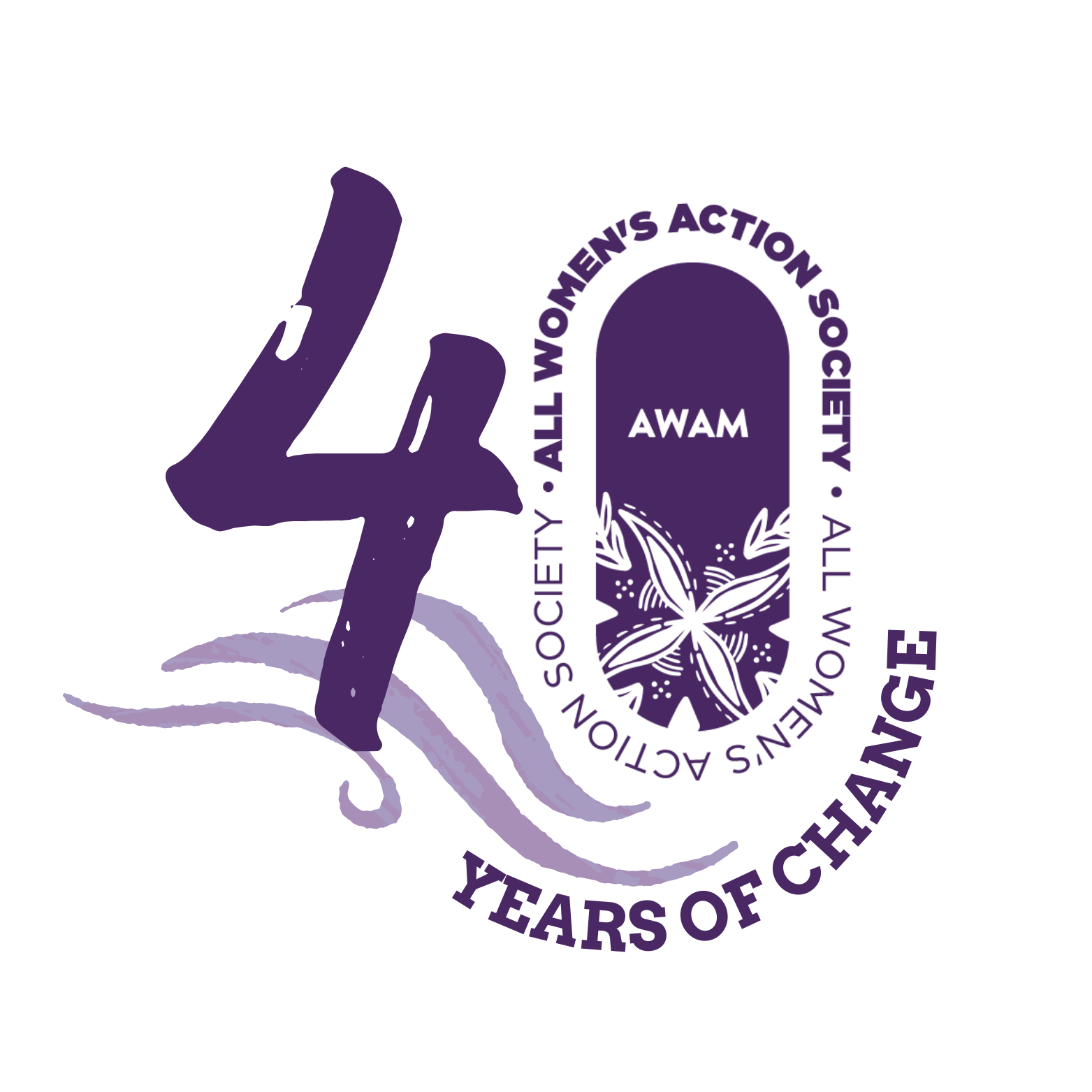[row label=”header” v_align=”middle” h_align=”center”]
[col span=”8″ span__sm=”12″]
Domestic Violence
Domestic Violence describes any act of direct or indirect violence or abuse (including acts of coercion or preventing the other person’s access to their rights) that is used by someone within the domestic sphere to exercise power and control over another. It can include but is not limited to physical, sexual, psychological, verbal, emotional, and financial abuse.
Domestic violence can happen to anyone, regardless of age, social background, gender, religion, sexuality, or ethnicity.
The most important thing to remember is:
“Domestic Violence is never the fault of the survivor”.
[/col]
[col span=”4″ span__sm=”12″ bg_color=”rgb(46, 6, 78)” color=”light”]
[accordion title=”Types of Gender Based Violence” auto_open=”true”]
[accordion-item title=”Intimate-Partner Violence”]
Intimate-Partner Violence (IPV) refers to couples who experience domestic violence outside the bonds of marriage. They are usually couples who live together. In Malaysia, these unmarried couples do not have access to the same protections under the Domestic Violence Act.
[/accordion-item]
[accordion-item title=”Dating Violence”]
Dating violence happens when someone you are seeing romantically harms you in some way, whether it is physically, sexually, emotionally, or all three. Dating violence can occur anytime from the beginning of your relationship to years later. Many of the signs, symptoms and effects of dating violence overlap with domestic violence.
So if your boyfriend/girlfriend is already abusing now, please seek help and get out of the dangerous situation you are in. It is NOT likely to get better over the years.
[/accordion-item]
[/accordion]
[/col]
[col span__sm=”12″ bg_color=”rgb(243, 242, 255)”]

When many of us think of home, we picture a place of comfort and security. A place that is a temporary haven, freeing us from the stress we face out in the world. We often seek refuge in this place we can cherish with loved ones. Unfortunately, for survivors of domestic violence, this is far from reality. Survivors of domestic violence often live under the same roof as their abuser.
Domestic violence is a pervasive issue that disproportionately sees women and girls as survivors. This form of violence may take place both inside and outside the home and there is a personal relationship between the perpetrator and survivor, such as a husband and wife or a parent and child. Domestic violence operates in a cycle that keeps the survivor oppressed and the perpetrator in power. Since the survivor is oppressed, their ability to escape or seek help is compromised.
Due to the nature of the survivor’s personal relationship with the perpetrator, they often spend a great deal of time together. Making matters worse, the perpetrator often threatens the survivor not to tell even their closest friends and family that it’s been happening. This leaves the survivor feeling helpless to their self and any children that may be involved. If there are children in the picture, the perpetrator may even use them as a threat, saying things such as “if you tell someone or try to run away, I’ll hurt the kids.” The perpetrator tends to be highly manipulative and dismisses the abuse as the survivor’s own fault rather than taking accountability.
[gap]
[/col]
[/row]
[accordion title=”Criminal Offences Related to Domestic Violence Under the Penal Code”]
[accordion-item title=”Wrongful Confinement”]
Wrongful confinement can apply to family members who are forcefully or wrongfully restrained in order to prevent them from seeking help. An example of this could be preventing a survivor who is hurt from obtaining medical assistance or lodging a police report.

[/accordion-item]
[accordion-item title=”Forced Sexual Acts (Not Including Vaginal Penetration)”]
This would apply in situations where the spouse was forced into having anal sex, penetration by an object (including sex toys) or are forced to perform oral sex without their consent. This includes situations where the spouse was beaten into performing the act or performs the act because they believing that their life or physical safety is at risk.
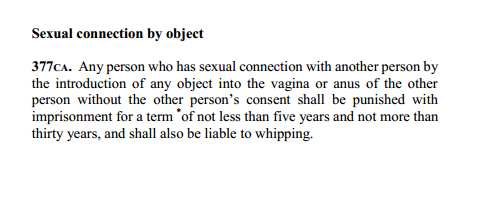
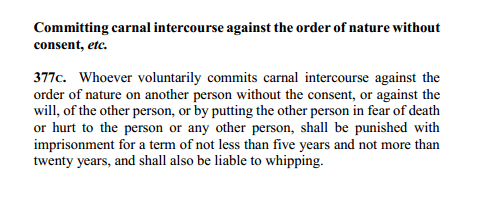
[/accordion-item]
[accordion-item title=”Aggravated Sex (Vaginal Penetration)”]
This would apply in situations where the spouse was forced into sexual intercourse (vaginal penetration) without their consent. This includes situations where the spouse was beaten into performing the act or performs the act because they believe that their life or physical safety is at risk.

[/accordion-item]
[accordion-item title=”Criminal Force by Spouse”]
A person is said to use criminal force upon survivors when the person intentionally uses force on the survivor without their consent or has intent to use of such illegal force. The definition of criminal force can be found under Section 350.

The definition of criminal force can be found under Section 350.
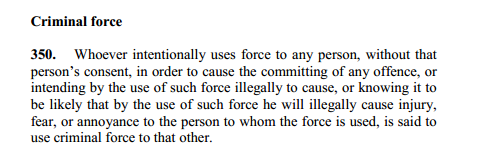
[/accordion-item]
[accordion-item title=”Causing Hurt”]
Causing Hurt is outlined in three criminal offences listed below that can be committed by either spouse in a marriage.

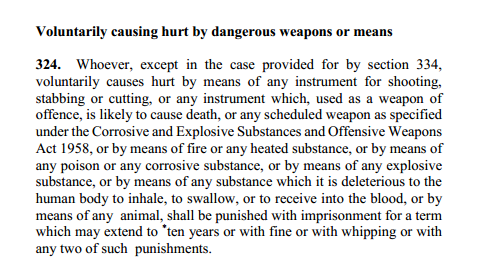

[/accordion-item]
[accordion-item title=”Causing Hurt by Endangering Life”]
This applies to situations where a spouse causes hurt by any act that endangers the life or safety of the survivor.
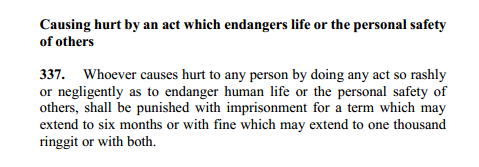
[/accordion-item]
[accordion-item title=”Incest”]
This applies to situations where a person has sexual intercourse with another person who is too closely related to them for them to marry each other.

[/accordion-item]
[accordion-item title=”Gross Indecency with a Child”]
Domestic violence also includes Child Sexual Assault. This law applies to anyone including parents and other family members.

[/accordion-item]
[accordion-item title=”Theft and Property”]
This applies to situations related to extortion and property. Extortion is defined as a situation where a person threatens to obtain something, especially money, through force or threats. Property outlines offences related to the destruction of property or the dishonest misappropriation of property.

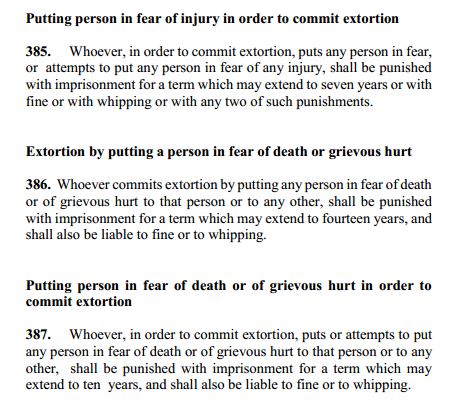
Property


[/accordion-item]
[/accordion]
[row label=”Power Wheel & Laws” h_align=”center”]
[col span=”8″ span__sm=”12″]
[ux_image id=”2263″]
[/col]
[col span=”4″ span__sm=”12″]
Power and Control
Domestic violence is about power and control. The Domestic Abuse Intervention Programs in Duluth, Minnesota developed what is called the ‘Power and Control Wheel’ illustrated above that indicates methods used by perpetrators to maintain power and control over the victim/survivor.
The Outer Ring consists of acts of physical and sexual violence (and includes the types of abuses that are mentioned above such as financial and tech abuse). These acts of violence can be broken down into 8 common methods used by perpetrators in order to establish power and control.
[/col]
[/row]
[row]
[col span__sm=”12″]
It Doesn’t All Manifest the Same Way
The Types of Domestic Violence
- Physical abuse
Hitting, punching, kicking or other acts intended to inflict any form of physical harm to the survivor. - Psychological abuse
Yelling, blaming, demeaning comments, name-calling, humiliating or other forms of psychological harassment that indicates asserting power over the survivor. - Sexual abuse
Committing sexual acts towards the survivor without their consent, such as groping, raping and/or sodomising them. - Social abuse
Prohibiting the survivor from seeing friends and family, causing isolation. This blocks the survivor from reaching out for help or leaving the relationship. - Financial/Economic abuse
Controlling a person’s ability to acquire/use/maintain their own money and resources by taking away credit cards, spending or taking away the survivor’s money without consent, damaging the survivor’s possessions or property, preventing the survivor from obtaining employment or other acts that will hinder the survivor’s financial freedom. These acts are done to gain control over the survivor’s activities and to prevent them from leaving the relationship (Funds are needed to rent a home, transfer to a new location, get a lawyer, etc.). - Tech abuse
Monitoring and limiting the survivor’s interactions with the outside world, blocking the survivor from help and from leaving the relationship. Although not a commonly accepted form of domestic violence, technology gives perpetrators more ways to stalk, isolate and control women.
[/col]
[/row]
[ux_banner height=”500px” bg_color=”rgb(165, 93, 223)”]
[text_box width=”91″ position_x=”50″ position_y=”50″]
Not All Scars Are Visible
Survivors of domestic violence may have physical ailments, while others may not be as easily detectable. The emergence of mental health issues and debilitating psychological conditions commonly follow in the wake of domestic violence. These ailments might manifest right away or take months to surface. It is critical to identify and act on these ailments in yourself or someone you know in order to receive effective and timely treatment.
At first, symptoms may present as fear, anger, confusion, guilt, or low self-esteem. Survivors also face the fear of social stigma that may prevent them from seeking help. An important thing for survivors to note is that the abuse was not their fault, nor should they feel guilty or ashamed. Reaching out for help from friends, family or professional mental health workers can help to alleviate these symptoms. Unfortunately, even with adequate support, chronic mental health problems such as post-traumatic stress disorder (PTSD), depression or anxiety may still become a reality.
[/text_box]
[/ux_banner]
[divider align=”center”]
[ux_banner height=”500px”]
[text_box width=”84″ position_x=”50″ position_y=”50″]
Women Facing Post-Traumatic Stress Disorder
We often make sense of our experiences by associating them with sentiments from a certain time and place. This rings especially true for traumatic incidents and contributes to our “fight or flight” response which allows us to assess a situation and act accordingly. For those living with PTSD (Post-traumatic Stress Disorder), this hard wiring has been taken to the extreme and causes the person to generalize all similar experiences in the future and link it to their past trauma. These are known as triggers that bring them back to the traumatic event. What was meant to be an evolutionary advantage now hinders their ability to cope with day to day life.
A survivor of domestic violence once stated that, “With my former [partner], I could tell by how the gravel crunched in the driveway whether or not I was in for it that night. Crunching gravel (my current locality) doesn’t mean the same thing, but my body didn’t know the difference. It just hears the crunch and immediately goes into alert.”
[/text_box]
[/ux_banner]
[row v_align=”middle”]
[col span__sm=”12″]
Survivors are Not Alone
Daily life following domestic violence can feel very isolating. At AWAM, we recognize that there is not a “one size fits all” healing process and survivors’ stories are unique from one another. We are here to listen, help survivors find their voice and empower them to restore the peace and security that has been stolen from their lives.
[gap]
[row_inner]
[col_inner span=”4″ span__sm=”12″]
[/col_inner]
[col_inner span=”4″ span__sm=”12″]
[button text=”Home” color=”success” radius=”99″ expand=”true” link=”www.awam.org.my”]
[button text=”Safety” style=”gloss” radius=”99″ expand=”true” link=”https://www.awam.org.my/safety/”]
[button text=”GBV” style=”gloss” radius=”99″ expand=”true” link=”https://www.awam.org.my/gender-based-violence/”]
[button text=”Supporting Survivors” style=”gloss” radius=”99″ expand=”true” link=”https://www.awam.org.my/services/supporting-survivors/”]
[button text=”Directory” style=”gloss” radius=”99″ expand=”true” link=”https://www.awam.org.my/services/directory-of-services/”]
[/col_inner]
[/row_inner]
[/col]
[/row]
Information compiled by Madeline Chow | Edited by Anastasha Abraham & Natasha Franklin
Sources:
[1] https://www.self.com/story/ptsd-domestic-violence
[2] https://www.nst.com.my/lifestyle/pulse/2018/06/378192/reaching-out-domestic-violence-survivors
[3] https://umexpert.um.edu.my/file/publication/00001669_62168.pdf
[4] https://www.refuge.org.uk
